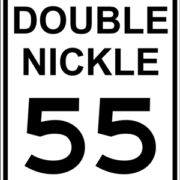“Double-nickeled and Stuck! Getting re-employed at 55 or beyond” – Part One
 In this part-one of a three-part series on “Double-nickeled and Stuck! Getting re-employed at 55 or beyond”, we will begin to take a look at the reality of what it takes to regain meaningful employment in today’s rapidly evolving workplace and at the process it takes to be prepared for the challenges ahead.
In this part-one of a three-part series on “Double-nickeled and Stuck! Getting re-employed at 55 or beyond”, we will begin to take a look at the reality of what it takes to regain meaningful employment in today’s rapidly evolving workplace and at the process it takes to be prepared for the challenges ahead.
Am I re-employable?
We’ll assume you don’t have a rap-sheet full of Class IV felonies and that, up to now, you’ve been a productive, above-average-to-superior contributor to your employer’s cause.
Yes, you are re-employable. But we need to get real about what it may take and to go into the process with modified expectations.
First of all, if you are still reeling from the groin-kick of an unexpected “involuntary retirement” from your job, there will be a few phases you’ll have to work through before you can be effective in a job search.
It’s easy to slide into the self-doubt abyss. Expect it, accept it, work through it. For most, it will start with denial and isolation followed by anger followed by depression followed by bargaining (willing to accept less or compromise) and, finally, acceptance. The choice here is to either compact all that into a few days or let it go on for months and eat yourself alive and make those closest to you wish you were somewhere else.
The sooner you can get to that final stage, the sooner you can get moving again. A good coach can help you climb out of the abyss by providing an understanding ear coupled with encouragement, accountability and direction.

No, you’re not a slug!
Your time and developed skills have not been wasted. There is a need. You have transferable skills, probably very deep transferable skills. But it may not be back in the same industry.
I often see folks in this position only looking back into the industry that just gut-punched them. Another opportunity may exist there but consider also that other companies and industries out there can use what you have. They need – and want – the deeper wisdom, discipline and common sense that come with that seasoned skill set. So start by being open to considering a big step away from the business space you’ve been in.
Time to reflect
You are at a very critical inflection point. It’s a good time for some introspection. Consider doing a deep-dive into three areas:
- What you accomplished while employed. Look, companies don’t employ slugs – at least for very long. You’ve done a good job and it wasn’t so much your performance but a new paradigm of business that took you out. Spend some time resurrecting those proud, acknowledged and rewarded accomplishments at your work. It’s likely you’ve forgotten them or taken them for granted. Journey back into your professional memory, dig them out. Write them out, preferably with hard-number quantification included. This is foundational to attitude restoration, for establishing your personal brand going forward and for helping you with the next tip.
- Some deep personal assessment. With this face-slap and temporary employment-lull comes a timely opportunity for re-assessment. What is it about you that made the accomplishments from #1 happen? Have you ever seriously reflected on what it is that drives you? What has motivated you to get up every morning and do your job? I suspect it was more than just mortgage coverage for 30 years.This is an important time to really examine the “why” of your life. The on-rush of life, mortgage coverage and public-image maintenance has a way of covering over one’s true motivating drivers. Now would be a good time to get honest about this area of your life.
- Start building your personal brand. What does that mean – personal brand? I like the definition: “the development of a unique professional identity and coherent message that sets you apart from others in your industry.” It will be important to be able establish what will draw attention and differentiate you. Here we go back to your previous accomplishments and begin to really isolate your strengths:
• What were you most recognized for?
• What problems did you consistently solve for others?
• What do people come to you repeatedly for advice?
• What success stories do you have stretched across your career? Your personal brand then needs to be translated to the components that you will need for your job search, specifically the resume, Linked In profile, your “elevator speech” and your interviewing skills.
All that is obviously beyond the scope of a single blog. My basic coaching program addresses this componentry with an eye toward positioning someone optimally for that move back into the marketplace.
Few of us function completely outside of innate talents and strengths. But, alas, few of us function completely within those same talents and strengths. And this is often due to the fact that maybe we don’t fully understand or acknowledge what our deepest talents and strengths are. In other words, we often are forcing ourselves to operate counter to how we are truly wired up.
That’s what I did for about 35 years of my sales and marketing and self-employment career. I had to reach my sixties (OK – I’m slow!) before I finally acknowledged and moved toward what I REALLY, REALLY wanted to do and what I was REALLY, REALLY good at. It’s still a work in progress, but a very gratifying one.
What turned it for me? A lot of self reflection along with some strengths assessments and some really solid books on personal psychology. Specifically, I bought the book “Now Discover Your Strengths” and took the Strengthsfinder assessment that comes with the book. I took the test three times before I finally accepted what it was telling me.
I also read (twice) three books by Marty Seligman, originator of Positive Psychology which acquainted me with the importance of operating within my strengths and also provided some assessments that were, surprisingly, in line with what Strengthsfinder unveiled for me.
All that has contributed to me finally moving to where I’m operating more within my innate talents and strengths.
So there’s a starting point. Do some self-assessing and take some quiet time asking yourself those same questions: What am I REALLY good at? What do I REALLY want to be? Where have I had the most impact?
Get some outside help.
Two other suggestions here
- Get with 5,10, 15 people who know you well and ask them what they think are your strengths and compare them to what you think they are. This is kinda tough since you may be a bit embarrassed about your situation and your dobber may be down, but it’s often a very revealing reality check.
- Hire a coach. Find somebody that will help you work through the down-time and the re-invention that you are going to need to go through.

Modify your expectations
We don’t dare leave this Part One without injecting a caveat. THIS WILL BE A BITCH!! With some serious heavy lifting.
Here’s the reality of it all. Those of us in the recruiting and job search coaching world know that re-entry at this age is tough, protracted and not a given. Be prepared for the following:
- For a self-directed job search, count on a minimum of one month’s search for every $10,000 in salary. How prepared are you to be able to hold out that long?
- Being able to return to the salary you just left probably isn’t going to happen. Can you expect it to be different when you are the 55-year old going to work for the 43 year old to do what he or she will hire a 40-year old to do?
- Today’s job market morphed while you were busy living life at your last job. What it takes to find a job has no resemblance to what you did the last time and will require a process and discipline that may tax you heavily emotionally and physically.
You will be thinking “JOB”. It’s an appropriate time for some new thinking as you go through this process and consider “ECONOMIC OPPORTUNITY” instead.
We’ll begin to address more of this with Parts Two and Three.
Let us know your thoughts about all this. What have your experiences been in this area? What advice do you have for others who find themselves in this situation? What’s worked and not worked for you? Leave a comment below – we really appreciate hearing from you.




Well said Gary! All I can say is I am thankful I have always been self-employed. Every day is a self-reflection assessment on what I am good at and what I am not. Your article touches on many items someone should be looking at and reviewing about themselves.
Thanks Sally. You know I admire what you have accomplished and am excited that you have even bigger plans at a time when many (most?) are thinking of “coming in for a landing.” You go girl!!
I am glad to be one of several visitors on this great internet site (:, regards for posting.
I used to be very happy to seek out this net-site.I wished to thanks to your time for this excellent read!! I undoubtedly having fun with every little bit of it and I’ve you bookmarked to take a look at new stuff you blog post.